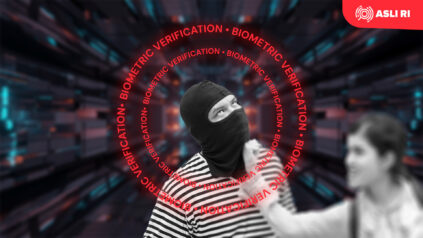Malicious bots are running riot – many don’t even realize the danger. Up to 47.40% of all internet traffic now comes from bots in 2022. While some perform helpful tasks like customer service and price comparisons, others are crafted specifically to attack. Just last year, a devastating botnet attack shut down Twitter, Netflix, CNN, and other major sites for nearly a full day.
The same artificial intelligence capabilities that power helpful bots also enable these malicious activities. This demonstrates the dual nature of such technologies – beneficial in some contexts but potentially dangerous in others. As bot-driven cyber threats grow, individuals and organizations must educate themselves on detection and prevention methods. Read this article for a full explanation of bots, their danger, and the proper mitigation methods.
What are Bots and Bot Attacks?
Bots are software programs designed to automate online tasks without human direction. Useful bots speed up mundane work like web scraping or inventory checks. However, malicious bots are programmed to infiltrate systems, overwhelm servers, steal data, and enable cybercrime.
The most common forms of bot attacks are:
- Spamming: cybercriminals use bots to send emails or messages unsolicitedly. This type of bot attack may be a scheme for scams such as phishing or malware.
- DDoS (distributed denial of service): Boot armies overwhelm websites and servers with fake traffic, causing shutdowns.
- Credential stuffing: The bot inserts stolen login credentials into an account, leading to an account takeover (ATO).
- Website scraping: Bots illegally harvest and export data from websites.
- Scalping: Bots purchase tickets or items that are high in demand, raising their prices and making them inaccessible to genuine buyers.
The Damaging Impact on Businesses
A yearly report from the National Cyber and Crypto Agency (BSSN) shows the rising number of national anomalies in 2021, topping off at 242,066,168 in December alone. These anomalies stem from malicious bots used to distribute malware. Aside from that, a recent cybersecurity report reported that bot traffic as a percentage of total website visits grew 5.1% year-over-year. Bots now account for 47.4% of web activity tracked in raw numbers, while human traffic has dwindled to just 52.6%, its smallest share since 2014.
These attacks can bear disastrous consequences such as:
- Website downtime that interrupts sales, transactions, and operations
- Loss of income due to blocked legitimate customers and purchases
- Reputational damage and distrust among customers who experience errors
- Enabled fraud, scams, and malware distribution that steal customer data
How Can We Mitigate the Consequences of Bot Attacks?
Implementing a bot detection and mitigation system should be a priority for businesses looking to reduce risk. Sophisticated bot management solutions can:
- Identify bot traffic instead of human users
- Block bots from creating accounts or accessing sites
- Prevent credential stuffing and fraud
For example, bot detection technology uses various signals like behavior patterns and interactions to distinguish bots from genuine human traffic. Integrating liveness checks requiring visual cues also ensures automated scripts cannot pass biometric authentication gates.
One comprehensive solution is True Identity Assurance. This identity verification system helps:
- Detect and deny bot account creation attempts
- Stop credential-stuffing attacks in their tracks
- Guard against data harvesting via web scraping bots
True Identity Assurance consisted of powerful features like:
- ID Verification: Digital identity proofing system that utilizes the government database, ensuring its accuracy and authenticity, allowing you to comply with the Customer Due Diligence regulation.
- Biometric Verification: An accurate and fast biometric verification system driven by AI that precisely matches biometric data. Listed in NIST publication as one of the most accurate biometric systems in the world in the FRVT 1:1 and 1:N categories.
- Liveness Detection: A system powered by artificial intelligence to detect living from non-living biometric objects. Prevent spoof attacks by distinguishing live faces from photos, videos, masks, and other attacks on various materials with high levels of accuracy.
Don’t Overlook the Bot Threat
Bot attacks fly under the radar but can severely disrupt businesses and customers. Preventing automated threats is mission-critical for any digital enterprise. Implementing robust bot detection and mitigation technology safeguards operations. Sophisticated systems identify suspicious traffic patterns and block fraudulent access attempts. Adding multi-factor authentication creates additional barriers against credential stuffing. ASLI RI’s True Identity Assurance solution combines bot blocking with biometric identity checks to secure accounts and data. Learn more about True Identity Assurance here.
Bot attack cyber threats fraud prevention identity fraud True Identity Assurance
Last modified: January 19, 2024











